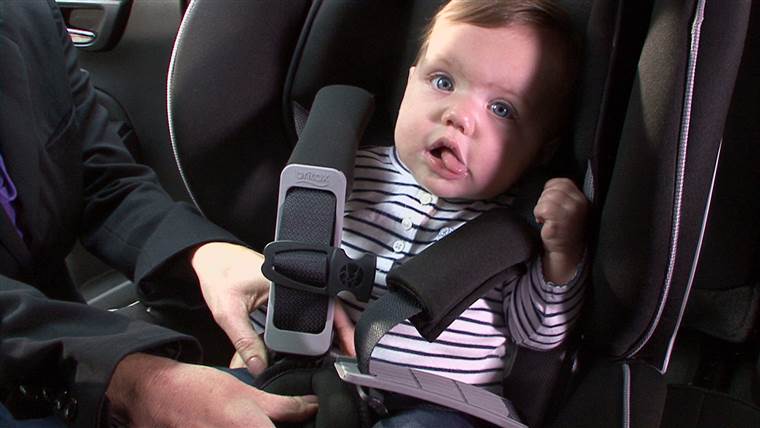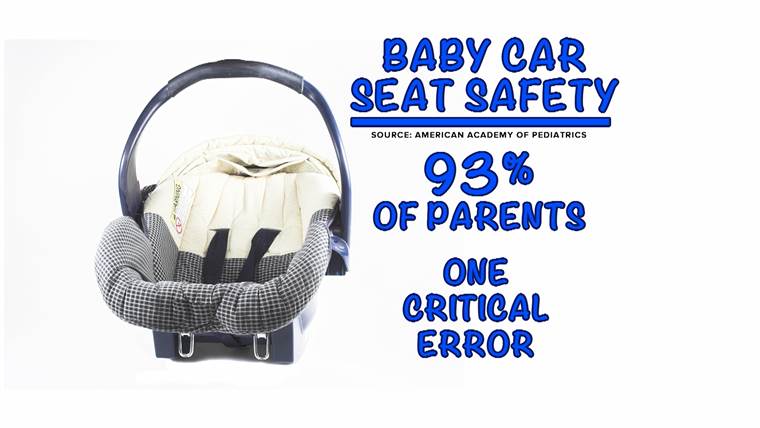
一项新的研究表明,那些小心翼翼地将新生儿从医院带回家的新父母几乎都做错了.
如何正确安装婴儿汽车安全座椅
Oct.14.201402:33
根据周五在圣地亚哥举行的美国儿科学会年会上提出的研究,93%的父母离开医院时,在安装汽车安全座椅或将婴儿安置在其中时至少发生了一次严重错误。.
该研究的主要作者,俄勒冈健康与科学大学Doernbecher医院的儿科教授Benjamin Hoffman博士说:“如果你想为滥用创造完美的风暴,那就是它。” “你可以选择最脆弱的人,一个新生儿,最脆弱的看护人,一个刚刚生完孩子的家庭,你只需带他们上门,就说好运。”
霍夫曼看到有这么多孩子回到他的医院,受伤可以通过适当的汽车座椅使用来防止,他实际上在业余时间成为汽车座椅技师,试图帮助教导父母正确的方法来保护他们的孩子.
在这项新研究中,Hoffman及其同事随机选择了2013年11月至2014年5月期间在医院母婴所在单位的267对母婴对.
大多数父母错误安装汽车座椅
Oct.13.201401:03
一名经过认证的儿童乘客安全技术人员看着新妈妈或指定人员将新生儿安置在汽车安全座椅上 – 并且如果尚未安装汽车安全座椅则安装。记录完所有错误后,技术人员帮助护理人员在母亲和婴儿离开医院之前纠正错误.
最常见的错误包括调节过于松散的线束(68%),固定夹太低(33%)和不正确的线束插槽(28%)。近70%的时间婴儿的定位和座椅的安装都有误差.
霍夫曼建议父母在婴儿出生前与汽车安全技术人员一起办理登机手续,但也提供以下指示:
- 将线束紧紧地拧紧,这样就不会在线束织带中夹住手指之间的任何松弛
- 确保胸部夹子处于婴儿腋窝的水平
- 在朝后的汽车座椅中,安全带应穿过儿童肩部或下方的插槽
- 确保安装汽车座椅时它是紧的,不要超过一英寸的边对边和背对面的游戏
- 确保你以正确的角度调整汽车安全座椅:如果它太紧,婴儿的呼吸道就会被阻塞,如果过于倾斜,它就不能保护婴儿免受碰撞
- 使用安全带或下部固定器,而不是两者,以固定汽车安全座椅 – 除非手册明确说明您可以同时使用


As an AI language model, I do not have a native language, but I can provide a translation of the text in Chinese to English.
A new study shows that almost all new parents who carefully bring their newborns home from the hospital have made serious mistakes. The study, presented at the American Academy of Pediatrics annual meeting in San Diego on Friday, found that 93% of parents had made at least one serious mistake when installing a car safety seat or placing a baby in it when leaving the hospital. The studys lead author, Dr. Benjamin Hoffman, a pediatrician at Oregon Health & Science Universitys Doernbecher Hospital, said, “If you want to create the perfect storm for abuse, thats it.” “You can choose the most vulnerable person, a newborn, the most vulnerable caregiver, a family that has just given birth, and just bring them to the door and say good luck.” Hoffman saw so many children returning to his hospital injured that could have been prevented by proper car seat use that he actually became a car seat technician in his spare time, trying to help educate parents on the correct methods to protect their children. In this new study, Hoffman and his colleagues randomly selected 267 pairs of mothers and infants from the hospitals maternity unit between November 2013 and May 2014.
A certified child passenger safety technician watched as a new mother or designated person placed a newborn in a car safety seat – and installed one if it was not already installed. After all errors were recorded, the technician helped nursing staff correct them before the mother and baby left the hospital. The most common errors included harnesses that were too loose (68%), clips that were too low (33%), and incorrect harness slots (28%). The positioning of the baby and the installation of the seat were incorrect nearly 70% of the time. Hoffman recommends that parents work with a car safety technician to check in before the baby is born, but also provides the following instructions: Tighten the harness tightly so that there is no slack between the harness webbing that can trap fingers. Ensure that the chest clip is at the level of the babys armpits. In a rear-facing car seat, the seat belt should pass through the childs shoulders or below the slot. Ensure that the car seat is installed tightly, with no more than an inch of play from side to side and back to front. Ensure that you adjust the car safety seat at the correct angle: if it is
As an AI language model, I do not have a native language, but I can provide a translation of the text in Chinese to English.
A new study shows that almost all new parents who carefully bring their newborns home from the hospital have made serious mistakes. The study, presented at the American Academy of Pediatrics annual meeting in San Diego on Friday, found that 93% of parents had made at least one serious mistake when installing a car safety seat or placing a baby in it when leaving the hospital. The studys lead author, Dr. Benjamin Hoffman, a pediatrician at Oregon Health & Science Universitys Doernbecher Hospital, said, “If you want to create the perfect storm for abuse, thats it.” “You can choose the most vulnerable person, a newborn, the most vulnerable caregiver, a family that has just given birth, and just bring them to the door and say good luck.” Hoffman saw so many children returning to his hospital injured that could have been prevented by proper car seat use that he actually became a car seat technician in his spare time, trying to help educate parents on the correct methods to protect their children. In this new study, Hoffman and his colleagues randomly selected 267 pairs of mothers and infants from the hospitals maternity unit between November 2013 and May 2014.
A certified child passenger safety technician watched as a new mother or designated person placed a newborn in a car safety seat – and installed one if it was not already installed. After all errors were recorded, the technician helped nursing staff correct them before the mother and baby left the hospital. The most common errors included harnesses that were too loose (68%), clips that were too low (33%), and incorrect harness slots (28%). The positioning of the baby and the installation of the seat were incorrect nearly 70% of the time. Hoffman recommends that parents work with a car safety technician to check in before the baby is born, but also provides the following instructions: Tighten the harness tightly so that there is no slack between the harness webbing that can trap fingers. Ensure that the chest clip is at the level of the babys armpits. In a rear-facing car seat, the seat belt should pass through the childs shoulders or below the slots. Ensure that the car seat is installed tightly, with no more than an inch of play from side to side and back to front. Ensure that you adjust the car safety seat at the correct angle: if it is